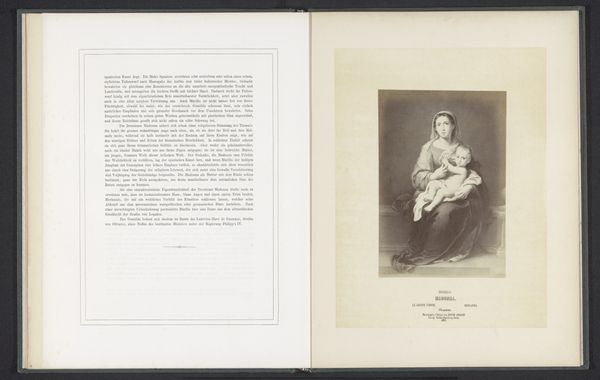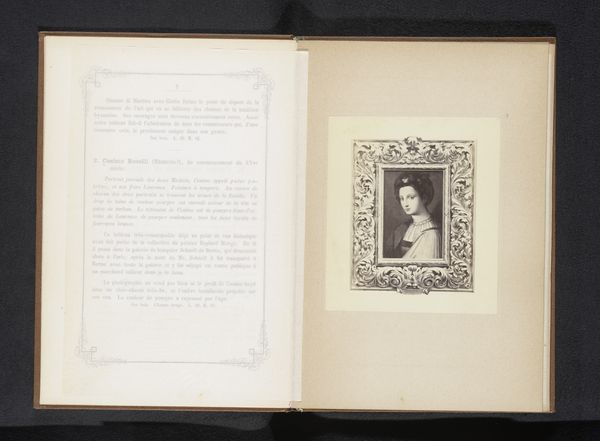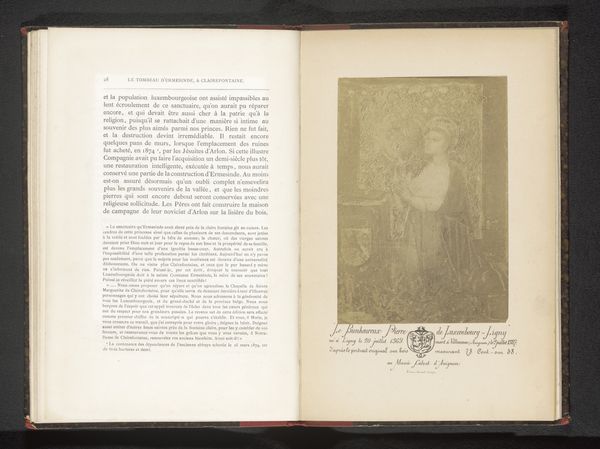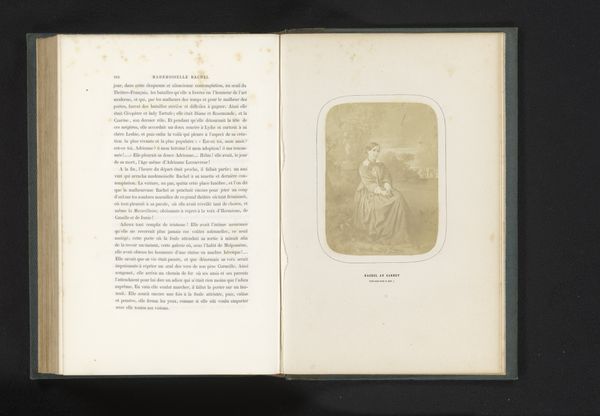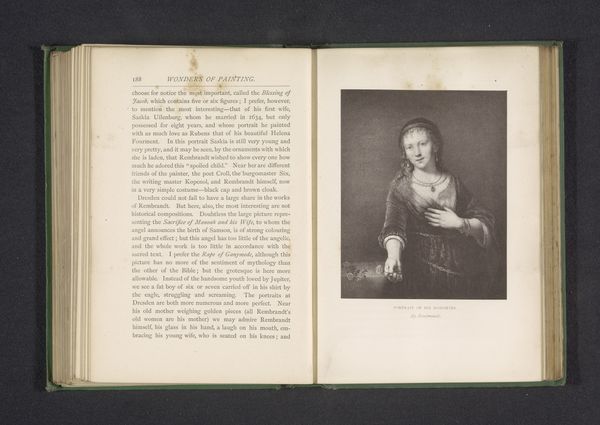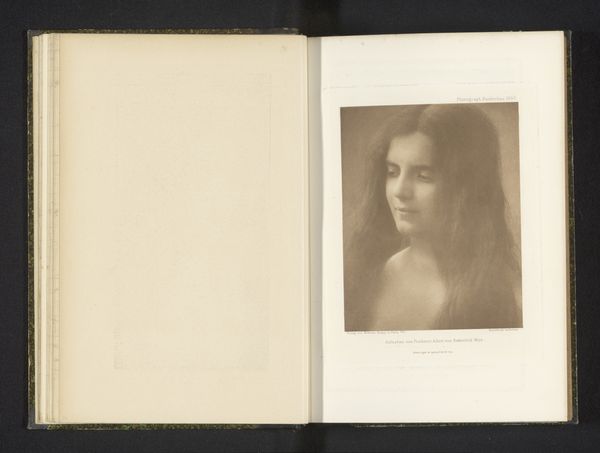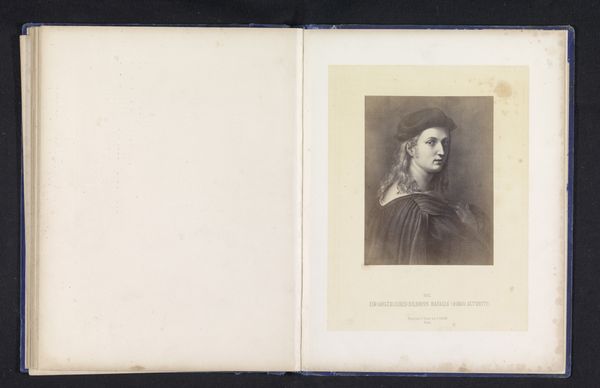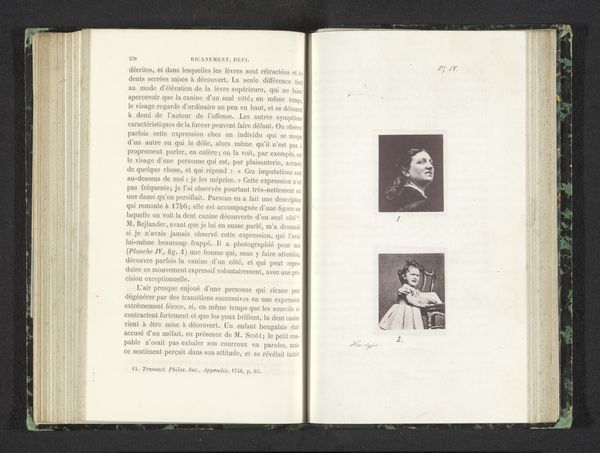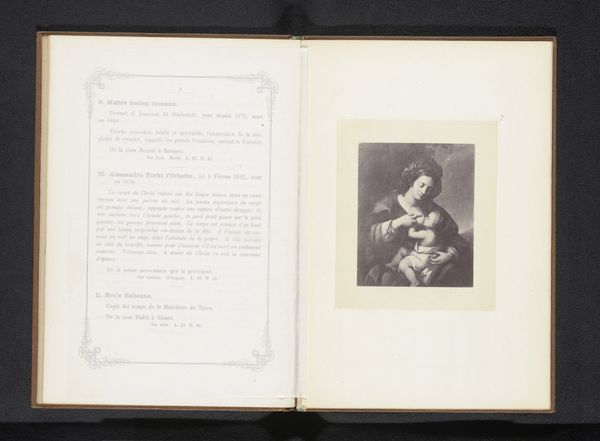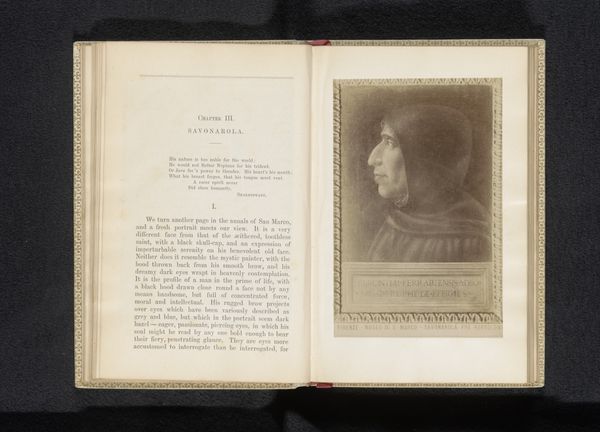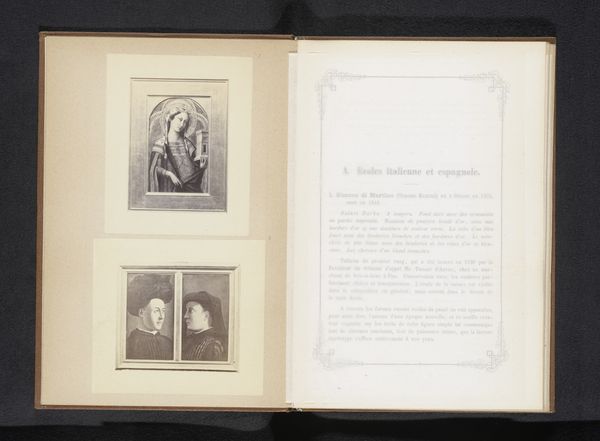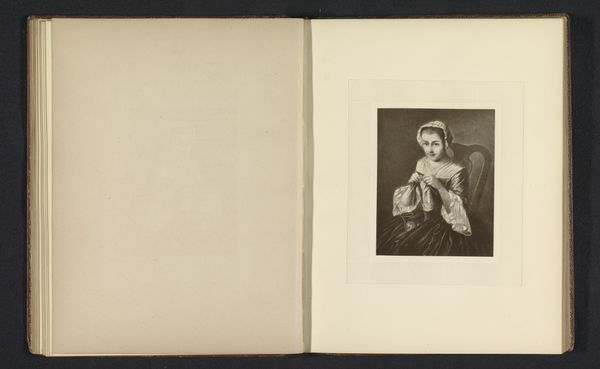
print, photography, engraving
#
portrait
# print
#
photography
#
italian-renaissance
#
early-renaissance
#
engraving
Dimensions: height 147 mm, width 110 mm
Copyright: Rijks Museum: Open Domain
Editor: So, here we have a photomechanical print from before 1861, "Fotoreproductie van een prent naar een zelfportret door Rafaël," or, a photographic reproduction of a print after a self-portrait by Raphael. It's stark, yet it evokes a sense of serene self-possession. How do you interpret this work in its historical context? Curator: That's a great observation. This image invites us to consider the power dynamics inherent in portraiture, particularly self-portraiture, during the Renaissance and its afterlife. Raphael, a celebrated male artist, controls his own image, crafting a visual narrative of genius and accomplishment. How does the photographic reproduction, created centuries later, complicate this narrative of artistic authority and authenticity? Editor: That's fascinating! It makes me think about how access to art shifts across time and how reproduction democratizes these iconic images, but it also opens the door to questions of appropriation. The image exists outside the original context of the Renaissance. Curator: Exactly. Think about the role of photography in the 19th century, the moment this image was made. What did it mean to reproduce Raphael’s image at a time when photography was challenging traditional forms of artmaking? The Renaissance revival movement further complicates this context. Were artists and the elite engaging with or perhaps appropriating aspects of the early-renaissance in an attempt to assert their own cultural status? Editor: I see what you mean. It brings to mind the ways in which artists throughout history draw upon and reinterpret the past, often reflecting the specific concerns and ideologies of their own time. It makes you wonder whether later societies may have been motivated to engage in early art because of anxieties relating to class. Curator: Precisely. Considering these threads, what was your understanding? How does analyzing these pieces of art through the cultural movements of their time help you in grasping what purpose art fulfils for a society? Editor: I learned how important it is to analyze how art can signify something other than itself about a specific era, how it reflects class or gender relationships. Curator: Indeed. And to always be critically conscious of the many interpretations art can carry.
Comments
No comments
Be the first to comment and join the conversation on the ultimate creative platform.
